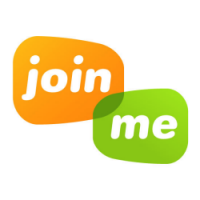How to Create More Effective Meeting Notes and Meeting Minutes In Coda
You are mid-way through a meeting with a potential client over Zoom or Google Hangouts, and you realize that you haven’t talked once yet about the services you offer or learned what problems the potential client has. If there was a proper agenda to steer the conversation before the meeting, you might have had a more productive meeting with the potential client.
It’s 11:07AM, and you and your colleagues are sitting in the conference room waiting for the person who set up the meeting to show up to the 11AM meeting. Do you e-mail or Slack that person to see where they are? Maybe someone in the room has that person’s cell phone number so a text might be more appropriate.

Whether you’re a small business setting up meetings with potential partners and clients, or an employee at a large company facilitating 30-person meetings, you most likely have participated in meetings that are not productive and a waste of your time. Over my career, I’ve had to write meeting agendas, keep meeting minutes, and created meeting templates so that my team doesn’t have to reinvent the wheel for each meeting. I created a set of meeting templates in Coda (where I build solutions) based on the meetings we hold internally as well as best practices I’ve gathered from effective meetings.
Previous tools for running effective meetings
Before I dive into how to use Coda for a meeting minutes template or logging meeting action items, I want to highlight some tools I’ve used in the past to keep track of meeting notes. While some of these tools may help with making your meeting more efficient, they may not be the best tools for making your meeting more effective. The main tool that comes to mind is Google Docs. I’m sure you’ve taken meeting notes in a Google Doc and what ends up happening is you have one long scrolling doc as you have more meetings with the same client or team members:

Source: Elle & Company
If you are meeting with clients, you might have a section called “Action Items” which contains bullet points of things you need to follow up on after the meeting. I would usually transfer those actions items to a Google Sheet, Trello, or a CRM tool like Hubspot so that the rest of my team knows what the status is with that client. Sometimes action items would get lost or not have a clear owner, since I am actively trying to take meeting notes but an action item might get mixed in with the notes, so I would have to go back and “dig” for the action item in a long scrolling doc.
For team meetings where I wanted to get feedback or questions from my team before the meeting started, I would change the permissions for the Google Calendar event so that anyone could edit the event. This way, any one of my teammates could log a question in the description box so that I knew what questions were on their mind that we could discuss in the meeting. Sometimes my teammates would just hit the e-mail button on the calendar invite to start an e-mail thread about topics they wanted to discuss during the meeting. What ensues, naturally, is a discussion over e-mail that should be happening in the meeting itself.

Source: Breezy HR
Creating a table of meeting topics with required pre-reading in Coda
At Coda, we have a weekly cadence for certain meetings, and have the agenda and topic stored in a table along with the future meeting date and any pre-read material meeting participants should be aware of. Here is an example of how you can store details about the meeting in a table so that anyone on your team can see before the meeting starts (you can see the full template here):

Instead of storing the agenda for future meetings in a Google Doc, putting them in Coda tables makes your meetings much more organized and easy to read. Since Coda is a real-time collaborative surface (similar to Google Docs), anyone can get a bird’s eye view of upcoming meetings by going to a master “meetings” Coda doc that shows the information above. Since Coda tables have special column formats, you can create columns of data that are more informative compared to a regular grid in Google Sheets. You can have formats for People which allows you to see pictures like the “Required Attendees” column in the screenshot above. One of the most useful column formats is the button which allows you to trigger other actions.
Instead of manually crafting an e-mail and adding your meeting attendees to the e-mail, the “Send pre-read” button in the template automatically does that for you as long as you have the “Required Attendees” column filled out in the table. When you click on the button settings, you can specify the subject line and content of the e-mail:

Notice how there is a formula in the “SUBJECT” field of the button? The subject line of the e-mail would be “Pre-reading for upcoming review on ” plus whatever text you have in the “Topic” column. Along with the Gmail Pack in Coda, pressing the button would automatically send the email with the pre-reading material to all your meeting attendees without you having to open Gmail at all.
On the go? When your Coda doc gets rendered on the mobile app, you’ll see buttons rendered as swipe gestures:

Use buttons to vote on the most important topics and questions during a meeting
Keeping people engaged is especially difficult when team members are remote and dialing in on Zoom or Google Hangouts. Remote attendees are already in front of a computer and can feel the urge to respond to random notifications left and right. I work remotely, and one template I use is this Meeting Notes and Question Voting template. In this template, anyone meeting attendee can add a topic or question, and the meeting facilitator asks the team to upvote the most important questions. Not only does this keep everyone in the meeting engaged by reading the list of topics and questions, it also brings the most important questions to the top of the list.
You can easily add a table with buttons to upvote topics by going through the plus → examples menu in a Coda doc:

In the Meeting Notes and Question Voting template, your meeting attendees can add questions to the table by simply hitting the “Add a Question” button as so:

Remember how I talked about your meeting attendees discussing over e-mail what topics or questions to bring up during the meeting? This nifty template allows not only keeps track of all the questions and topics to be discussed, but it lets anyone that is attending the meeting upvote their favorite topics and questions Reddit-style. The formula to make the “Vote” button with the thumbs up symbol is a little tricky (explained in the comments of this YouTube video), but as your meeting attendees click the button (can do this on mobile too!), the “Votes” column number will start increasing:

Since the “Votes” column is a number and the column is sorted in descending order, the row with the highest number will automatically rise to the top. This makes your meeting more effective because you don’t waste time answer questions or discussing topics that are not important or relevant for the entire team.
Use views to store actions items
You have taken copious meeting minutes and notes from your discussion with your client, and know you have a lot of actions items as a result of the meeting. In order to make sure you have the right action items, spend a few minutes at the end of the meeting to review the actions items from the meeting. Sometimes it may be as simple as scheduling another meeting, but if you are trying to win a new client, chances are there are quite a few action items with different owners. Thing you should capture about the action item include:
- The owner of the action item
- When the action item is due
- A way for both parties to know when the action item is done
I built this one-on-one meeting template that can be re-purposed for a one-on-one meeting with anyone. You can create multiple sections along the lefthand side of the template to organize your meeting notes by date. You start off by duplicating this section that contains free-form notes and a view of the main “Action Items” table:

By duplicating the section, you have a clean slate to start taking meeting notes and each date’s meeting notes are kept along the lefthand side section. Instead of scrolling through a really long Google Doc, these sections act as individual “docs” within your Coda doc. You can further organize your sections into folders which could be helpful if you want to segment your notes by client, for instance.
As your meeting takes place, you can write notes in the doc like you would any other doc by putting in bullet points, embedding images, and even embedding Google Drive files into your doc. What about action items? Remember how I talked about transferring your action items to a Google Sheet, Trello, or Hubspot? That isn’t necessary anymore since we have a view of the “Action Items” table in each one of our sections. When you click on the green “Add an Action Item” button, it adds a row to the view which happens to be filtered on the date of the meeting:

Why is this important? You can have more effective follow up after the meeting since all your action items will be stored in a structured table instead of as random bullet points in your Google Doc. All the action items you add for that specific data get added to a master “Action Items” table. Click on the “Action Items” section to see all actions items you’ve logged across all your meetings. No more scrolling in one long Google Doc to find all the action items you wrote down from a week ago or copying and pasting action items to another tool. Everything is nice and neat in one table:

Meeting minutes and meeting agendas just got more effective and fun
Hopefully the templates I showed and the tips I provided will help you make your future meetings more effective. Coda is more than just a doc that lets you write notes with bullet points and nicely formatted words that are important for meetings. Some of the building blocks that make Coda more powerful for meetings (which I discussed above) include:
- Tables – Mix your text with a structured table of data.
- Views – Create a copy of your data that is filtered to just the data you need. Changes you make in the view also are reflected in the underlying table.
- Buttons – A way to interact with your doc to make it feel more like an app. This turns your old and boring meeting template into a meeting app.
- Formulas – One of the most powerful building blocks in Coda. Formulas allow you to visualize your data the way you want.
- Packs – Integrate other applications you use like Gmail, Google Calendar, and Slack with your Coda doc.
The meeting templates show just 3 templates you can use to run more effective meetings, but the beauty of the Coda platform is that you can building any type of meting doc you want. Treat these templates as starting points. You can also browser the template gallery for more meeting-related templates. Some ideas for a meeting doc you could create:
- Every time a meeting is added to the table of meetings, send a Slack message to your team’s channel indicating a meeting has been created
- Create a meeting timer in your doc so that people don’t speak longer than the allotted time they are given
- Automatically send weekly reminders to meeting attendees that they have an upcoming meeting to attend (using Automations)
The possibilities are only limited to your creativity on how you want to run your next meeting!
About the Author

Al Chen is a solutions architect at Coda. Before joining Coda, Al worked on freelance projects building Excel models and dashboards. Being an Excel power user for 10+ years, Al’s worldview changed when he discovered Coda and began building docs for his clients. Today, he works with organizations who are bogged down by manual processes and helps them build Coda docs to improve team productivity.






